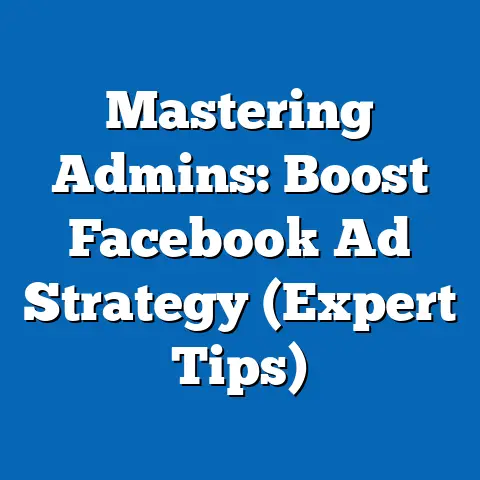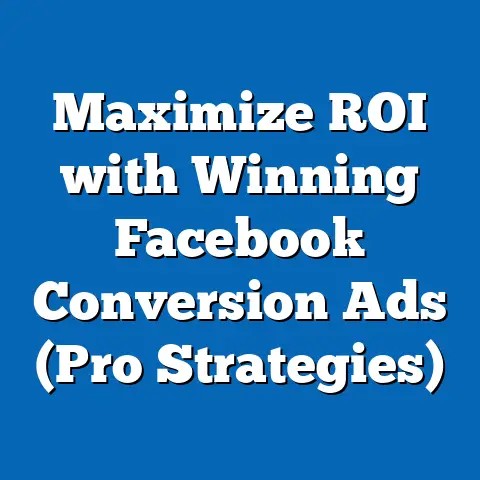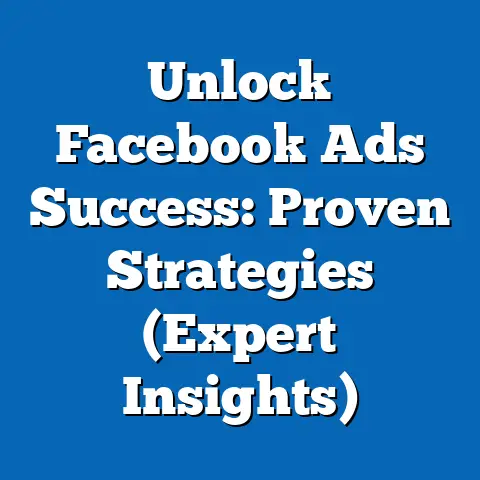Google Ads vs. Facebook Ads for Remodelers (Ultimate Guide)
The remodeling industry is a competitive landscape. To stand out and attract new clients, remodelers need effective advertising strategies. Gone are the days of relying solely on word-of-mouth or newspaper ads. Digital advertising has revolutionized how remodelers connect with potential customers, offering unparalleled targeting capabilities and measurable results.
I’ve spent years helping businesses, including remodelers, navigate the complex world of online advertising. I’ve seen firsthand the power of both Google Ads and Facebook Ads when used strategically. While both platforms can drive leads and sales, they operate in fundamentally different ways, offering unique benefits that many remodelers often overlook. This guide will delve into the hidden advantages of each, providing you with the knowledge to make informed decisions about where to invest your marketing budget.
Overview of Google Ads
Google Ads, formerly known as Google AdWords, has been a cornerstone of digital advertising since its inception in 2000. It operates primarily on a pay-per-click (PPC) model, where advertisers bid on keywords relevant to their business and only pay when someone clicks on their ad. The beauty of Google Ads lies in its ability to target users actively searching for specific products or services.
For remodelers, this means targeting keywords like “kitchen remodel near me,” “bathroom renovation contractor,” or “home addition cost.” When a user searches for these terms, your ad appears at the top or bottom of the search results page, giving you immediate visibility to a highly qualified prospect.
Hidden Benefits of Google Ads for Remodelers:
Overview of Facebook Ads
Facebook Ads, on the other hand, takes a different approach. Instead of targeting users based on search intent, Facebook Ads allows you to target users based on their demographics, interests, behaviors, and connections. This makes it a powerful tool for building brand awareness, generating leads, and reaching a wider audience.
Facebook Ads are visually driven, relying on compelling images and videos to capture users’ attention as they scroll through their newsfeeds. For remodelers, this means showcasing stunning before-and-after photos of your projects, highlighting your expertise, and creating a visual narrative that resonates with your target audience.
Hidden Benefits of Facebook Ads for Remodelers:
- Building Community Engagement and Brand Loyalty: Facebook is a social platform, and your ads can be more than just advertisements. They can be a way to engage with your audience, build a community around your brand, and foster loyalty. I’ve seen remodelers create Facebook groups where they share tips, answer questions, and showcase their latest projects. This creates a sense of community and positions them as trusted experts.
- Advanced Targeting Capabilities: Facebook’s targeting capabilities are incredibly granular. You can target users based on their age, gender, location, interests, income, homeownership status, and much more. This allows you to reach a highly specific audience with tailored messaging. For example, you could target homeowners in a specific neighborhood who are interested in home improvement and have a certain income level.
- Effective Retargeting Ads: Retargeting allows you to re-engage users who have previously interacted with your brand, such as visiting your website, watching a video, or liking your Facebook page. These users are already familiar with your brand, making them more likely to convert. I’ve seen retargeting ads be incredibly effective for remodelers, especially when showcasing specific projects that align with the user’s interests.
Key Takeaway: Facebook Ads are ideal for building brand awareness, generating leads, and reaching a wider audience through visual storytelling and advanced targeting.
Comparing the Audience Reach
The primary difference between Google Ads and Facebook Ads lies in how they reach their audiences. Google Ads taps into users actively searching for remodeling solutions, while Facebook Ads reaches users based on their interests and demographic data. This fundamental difference has a significant impact on the type of audience you’re reaching and the messaging you should use.
Google Ads:
- High Intent: Users searching on Google are typically further along in the buying process. They know they need a remodeler and are actively looking for options.
- Specific Needs: They often have a specific project in mind, such as a kitchen remodel or bathroom renovation.
- Limited Scope: The reach is limited to those actively searching for your services in your target area.
Facebook Ads:
- Broad Reach: Facebook allows you to reach a much wider audience based on interests, demographics, and behaviors.
- Passive Engagement: Users are not actively searching for your services; they are being exposed to your ads as they browse their newsfeeds.
- Influence and Inspiration: Facebook Ads are great for inspiring users and showcasing the possibilities of remodeling.
Hidden Benefits Related to Audience Insights and Segmentation:
- Google Ads: Understanding Search Intent: By analyzing the keywords people are using to find your business, you can gain valuable insights into their needs and priorities. This information can be used to refine your messaging and tailor your services to better meet their expectations.
- Facebook Ads: Identifying Untapped Markets: Facebook’s detailed targeting options allow you to identify niche markets that you may not have considered before. For example, you could target users who are interested in sustainable home design or those who have recently moved into a new home.
Impact of Seasonal Trends:
- Google Ads: Search volume for remodeling services tends to peak during the spring and summer months. This is when people are thinking about home improvement projects and are more likely to be actively searching for remodelers.
- Facebook Ads: Facebook Ads can be effective year-round, but it’s important to tailor your messaging to the season. For example, during the winter months, you could focus on showcasing cozy indoor spaces and promoting energy-efficient upgrades.
Key Takeaway: Understanding the differences in audience reach between Google Ads and Facebook Ads is crucial for crafting effective messaging and maximizing your advertising ROI. Google Ads targets users with high intent, while Facebook Ads reaches a broader audience based on interests and demographics.
Cost-Effectiveness and ROI
The cost structures of Google Ads and Facebook Ads differ significantly, and understanding these differences is crucial for maximizing your return on investment (ROI). Google Ads operates on a pay-per-click (PPC) model, where you bid on keywords and pay each time someone clicks on your ad. Facebook Ads, on the other hand, offers a variety of bidding options, including cost-per-click (CPC), cost-per-impression (CPM), and cost-per-action (CPA).
Google Ads:
- Higher Cost Per Click: Due to the high intent of users searching on Google, the cost per click (CPC) tends to be higher than on Facebook.
- Potential for Higher Conversion Rates: However, the higher CPC is often offset by higher conversion rates, as users are actively looking for your services.
- Budget Control: You have complete control over your budget and can set daily or monthly spending limits.
Facebook Ads:
- Lower Cost Per Engagement: Facebook Ads typically have a lower cost per engagement (likes, shares, comments) than Google Ads.
- Broader Reach: You can reach a much wider audience for a lower cost, making it a good option for building brand awareness.
- Conversion Optimization: Facebook’s algorithms are designed to optimize your ads for conversions, helping you to get the most out of your budget.
Hidden Benefits Related to Cost-Effectiveness and ROI:
- Google Ads: Targeting Users with Immediate Intent: The potential for higher conversion rates with Google Ads is a significant hidden benefit. By targeting users who are actively searching for remodeling solutions, you are more likely to generate leads and sales.
- Facebook Ads: Building Brand Awareness and Long-Term Customer Relationships: The lower cost per engagement and broader reach with Facebook Ads can lead to increased brand awareness and long-term customer relationships. Even if users don’t convert immediately, they are more likely to remember your brand and consider you when they are ready to remodel.
Key Takeaway: Carefully consider your budget and marketing goals when choosing between Google Ads and Facebook Ads. Google Ads offers higher conversion rates for users with immediate intent, while Facebook Ads provides broader reach and brand awareness at a lower cost per engagement.
Creative Strategies and Ad Formats
The creative options available on Google Ads and Facebook Ads differ significantly, reflecting the different ways users interact with each platform. Google Ads primarily relies on text-based ads, while Facebook Ads are visually driven, incorporating images, videos, and carousels.
Google Ads:
- Text-Based Ads: Google Ads primarily relies on text-based ads, which consist of headlines, descriptions, and a call to action.
- Responsive Search Ads: Responsive search ads allow you to test different headlines and descriptions to see which combinations perform best.
- Ad Extensions: Ad extensions allow you to add additional information to your ads, such as your phone number, address, website links, and customer reviews.
Facebook Ads:
- Image Ads: Image ads are a simple and effective way to showcase your remodeling projects. Use high-quality images that highlight your best work.
- Video Ads: Video ads are highly engaging and can be used to tell a story, showcase your expertise, or provide a virtual tour of your projects.
- Carousel Ads: Carousel ads allow you to showcase multiple images or videos in a single ad, giving users a more comprehensive view of your services.
Hidden Benefits of Creative Strategies:
- Facebook Ads: Showcasing Before-and-After Images: Before-and-after images are incredibly powerful for remodelers. They allow you to visually demonstrate the impact of your work and inspire potential clients.
- Google Ads: Utilizing Responsive Search Ads: Responsive search ads allow you to test different headlines and descriptions to see which combinations resonate best with your target audience. This can significantly improve your click-through rates and conversion rates.
Examples of Successful Ad Campaigns for Remodelers:
- Google Ads: A remodeler targeting the keyword “kitchen remodel cost” with a text ad that highlights their free consultation and competitive pricing.
- Facebook Ads: A remodeler showcasing a stunning before-and-after video of a bathroom renovation, targeting homeowners in their local area who are interested in home improvement.
Key Takeaway: Tailor your creative strategy to the platform and your target audience. Use compelling visuals on Facebook to capture attention and informative text ads on Google to address specific needs.
Conclusion
In conclusion, both Google Ads and Facebook Ads offer unique benefits for remodelers looking to grow their business. Google Ads excels at capturing leads from users actively searching for remodeling services, while Facebook Ads is ideal for building brand awareness, generating leads, and reaching a wider audience through visual storytelling and advanced targeting.
Both platforms also offer hidden benefits that can significantly enhance your marketing efforts. Google Ads allows you to understand search intent and refine your messaging, while Facebook Ads helps you identify untapped markets and build long-term customer relationships.
Ultimately, the best approach depends on your specific business goals, target audience, and overall marketing strategy. Consider your budget, the type of projects you specialize in, and the demographics of your ideal clients when making your decision.
Whether you choose Google Ads, Facebook Ads, or a combination of both, remember that effective digital advertising requires continuous monitoring, optimization, and a willingness to adapt to changing trends. By embracing the power of digital advertising, you can unlock significant growth and success for your remodeling business. Don’t be afraid to experiment, track your results, and continuously refine your strategies. The potential for growth and success is within your reach!






